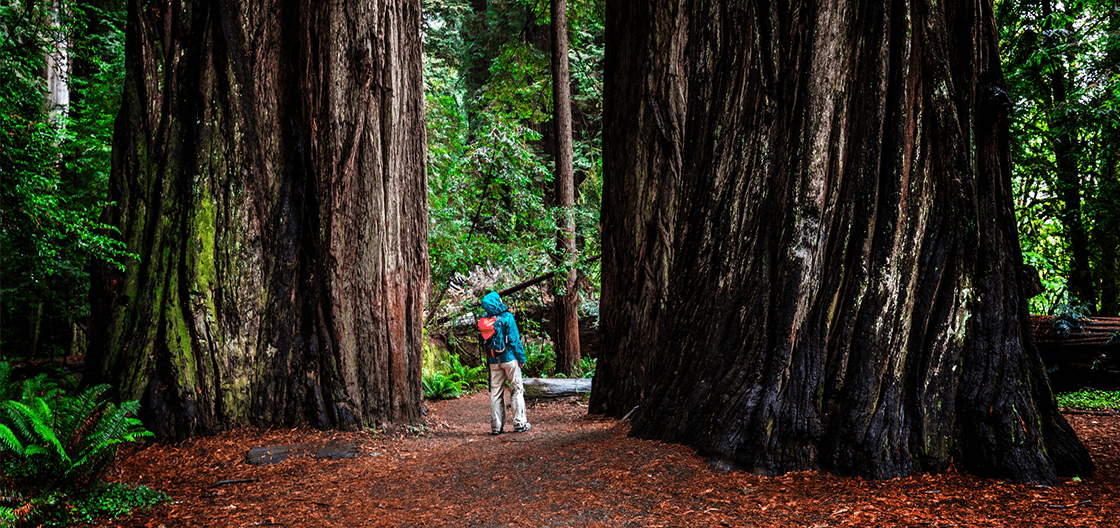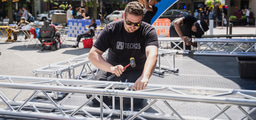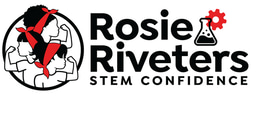Redwood on Broadway: Exploring the AV Technology

A variety of industries have been impacted by the growth of AV technology, and the performing arts are no different. From Tom Francis walking down 44th Street during the current Broadway revival of Sunset Boulevard to the integration of social media posts in Dear Evan Hansen, musical theatre productions are constantly utilizing technological advancements to their advantage. This integration and implementation of technology into the theatre was showcased beautifully in the new musical Redwood, starring Tony Award winner Idina Menzel.
This show featured over 1,000 LED panels, forming 13 screens that surrounded the entirety of the stage as well as going beyond the stage, covering the proscenium and opera boxes, bridging the gap between the actors and audience. The screens allowed for audience members to feel like they were really in the forest with Jesse, played by Menzel, and were able to see the scenes through her eyes.
Behind the Scenes of Redwood on Broadway
Often overlooked once a show opens, the creative team is essential for helping audiences understand and appreciate the story the actors are trying to tell.
Meet the Creatives
Led by director Tina Landau, the creative team of Redwood was made of renowned industry professionals that have been nominated for and won a variety of awards. Jason Ardizzone-West (Scenic Design, Jesus Christ Superstar Live, Peter Pan Live!), Hana S. Kim (Video Design, The Outsiders, LA Opera), Jonathan Deans (Sound Design, Waitress, Jagged Little Pill, Cirque du Soleil), and Scott Zielinski (Lighting Design, Floyd Collins, Oklahoma!) worked together to create an atmosphere that transported audience members into the redwood forest.
The AV Magic in Redwood: Bringing the Forest to Life
The show was immersive both visually and sonically, which required great skill and collaboration among the whole creative team.
Digital Backdrops
When arriving in the forest for the first time, the video productions follow Jesse's perspective — starting at the ground and slowly moving up until you see the top of the trees and the sky. Throughout the show, as Jesse moves through the forest, the audience is brought along on the journey through the use of moving video projections. Ardizzone-West (Scenic Design) described the 13 LED screens that make up the backdrop of the production as a sculptural canvas that Kim (Video Design) had to paint on. To aid in her design process, Kim took multiple trips to the redwoods to collect reference images and videos.
Captivating Soundscapes
To capture the true essence of the forest, sound designer Jonathan Deans also went to the redwood forest and recorded a variety of sounds on a multi-track. This exact track could be heard throughout the show any time the actors were in the forest. While most theatres aim to allow all audience members to hear the same mix, regardless of location, Deans decided to utilize surround sound for Redwood. In conjunction with the surrounding LED screens, the surround sound allowed the audience to feel like they were immersed in the forest.
Innovative Lighting Techniques
LED strips were built into the stage and along the ceiling in linear patterns. This intentional design was to mimic the root pattern of the giant redwood tree—the centerpiece of the stage. When it came to lighting the actors on stage, Zielinski (Lighting Design), had to strike a balance between providing enough light so the actors could be seen and making sure to avoid light on the LED screens. This required creativity in the angles of spotlights and rigging above the stage so the actors did not bump into a light when climbing up the tree.
Storytelling Taken Up a Notch
While storytelling has remained at the core of theatrical productions, advancing AV technology has become an indispensable tool for directors, designers, and creative teams looking to push the boundaries of what’s possible.
Looking Ahead: The AV Future in Theatre
Setting Trends for Future Productions
AV technology has unlocked new creative possibilities and dimensions that were not previously accessible with only performers and props. While Redwood on Broadway may not have had the longest run, its innovative use of technology showed what can be done in a stage production to bridge the gap between the actors and audience. Innovations in scenic, lighting, and sound designs, as well as the inclusion of video design, have undoubtedly shaped the future of theatrical and live productions, demonstrating what is possible with the right vision, tools, and collaborators.
Opportunities for Aspiring Theatre Professionals
The inclusion of advanced AV technologies provides career opportunities to people who may not have considered their skill sets applicable to theatre. Integrating AV technology education into theatrical training programs can help shape future theatre professionals and prepare them for some of the changes we are already seeing in the industry. In theatre, there is always room for evolution, and incorporating AV is a great way for directors to push the boundaries of what we have historically seen and experienced on stage.
If you’re attending InfoComm 2025 in Orlando, you might want to check out Hidden Talent: A Discussion on Transferable Skills Across Events & Entertainment to learn from a panel of representatives from the International Alliance of Theatrical Stage Employees (IATSE).
Photo credit: Getty Images/Peter Burnett





Please sign in or register for FREE
If you are a registered user on AVIXA Xchange, please sign in